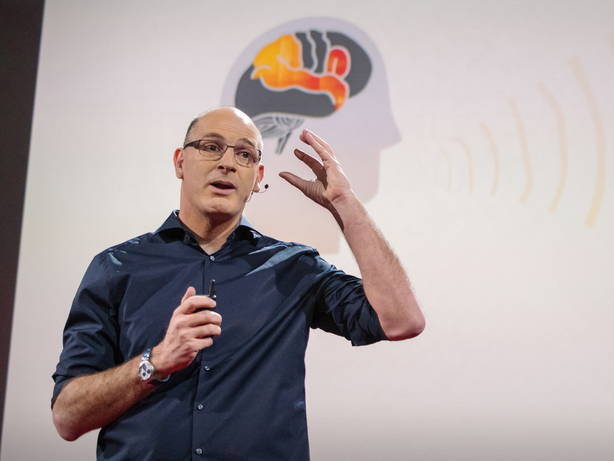Imagine that you invented a device
想象你發明了一種設備
that can record my memories, my dreams, my ideas, and transmit them to your brain.
能記錄我的記憶、我的夢想、我的想法,并且傳到你的大腦。
That would be a game-changing technology, right?
那將是改變世界的新科技,對吧?
But in fact, we already possess this device,
但事實上,我們已擁有這樣的設備,
and it's called human communication system and effective storytelling.
它被稱為“人類溝通系統”和“有效率的說故事方式”。
To understand how this device works, we have to look into our brains.
為了解這系統如何運作,我們得先了解大腦,
And we have to formulate the question in a slightly different manner.
并且稍稍改變提問的方向。

Now we have to ask how these neuron patterns in my brain
我們改問:我大腦中跟記憶、想法相關的神經元圖像,
that are associated with my memories and ideas are transmitted into your brains.
是如何被傳輸到你的腦里呢?
And we think there are two factors that enable us to communicate.
我們認為人能溝通須有兩大因素。
First, your brain is now physically coupled to the sound wave that I'm transmitting to your brain.
首先,你的大腦必須在物理上和我正在對你講話的聲波耦合。
And second, we developed a common neural protocol that enabled us to communicate.
其次,我們有共通的神經通訊協議使我們能夠溝通。
So how do we know that?
我們何以得知的呢?
In my lab in Princeton, we bring people to the fMRI scanner and we scan their brains
在普林斯頓的研究室里,我們對受測者進行功能性核磁共振儀掃描,
while they are either telling or listening to real-life stories.
就在他們講述或聆聽真實故事時掃描他們的大腦。
And to give you a sense of the stimulus we are using,
為讓各位了解我們使用的刺激物,
let me play 20 seconds from a story that we used,
我從一段故事中截取了20秒來播放,
told by a very talented storyteller, Jim O'Grady.
由非常有才華的說故事人吉姆·奧格雷迪來向我們講故事。











